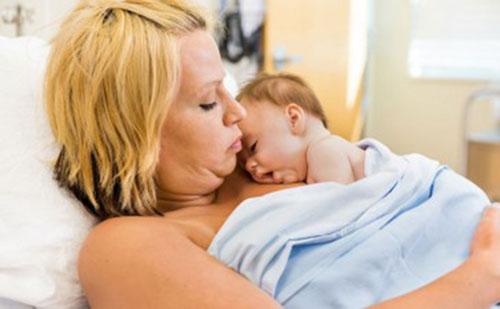You are here
Skin-to-skin contact after birth good for mom and baby
By Reuters - Dec 08,2016 - Last updated at Dec 08,2016

Photo courtesy of bundoo.com
Skin-to-skin contact between mothers and newborns immediately after birth can be used to promote breastfeeding and may give babies a better start in life, according to a new review of existing evidence.
Women who had skin-to-skin contact with their naked babies right after delivery were more likely to breastfeed longer and be breastfeeding months later than women who did not have their babies placed on their skin right away, the researchers found.
“The more you can do to place the mother and baby together and disturb them as little possible during that first hour, the better off they’ll be,” said lead author Elizabeth Moore, of the School of Nursing at Vanderbilt University in Nashville, Tennessee.
Moore and her colleagues write in the Cochrane Library November 25th that babies are often separated from their mothers at birth. The new review looked at whether placing naked babies on their mother’s bare chest improved breastfeeding and other health outcomes.
The review was coordinated by the Cochrane Collaboration, an international organisation that evaluates and reviews medical research.
The researchers looked through medical literature and found 46 randomised controlled trials to include in their review. The trials included 3,850 women and their newborns from 21 countries. All babies were healthy and most were born at term.
“We compared those trials to usual care, and usual care was very different depending on the trial,” said Moore. Trials from the 1970s may have separated mothers from their babies for hours. In more modern trials, babies might be swaddled in a blanket before being handed to the mother.
Compared to babies and mothers who received usual care, those who received skin-to-skin contact immediately after birth were about 24 per cent more likely to still be breastfeeding one to four months later.
Infants who received skin-to-skin care were also 32 per cent more likely to successfully breastfeed on their first try.
There was also evidence that women who got skin-to-skin contact breastfed longer and were more likely to exclusively breastfeed after leaving the hospital.
Evidence also suggested babies did better after receiving skin-to-skin contact after birth. They had higher scores on a measure evaluating their heart and lung function, had higher blood sugar levels and had a similar body temperature to their swaddled counterparts.
“It’s just something that if at all possible should happen,” Moore told Reuters Health.
Skin-to-skin contact should begin as soon as possible and last for at least 60 minutes, she said. The hour will give babies time to recover from the birthing experience, find the mother’s nipple and latch on.
“It’s not something you can do in just 15 minutes,” she said.
Moore said more research is needed on skin-to-skin contact after caesarean births and among babies born near full term.
“I think skin-to-skin care or contact is a no-cost intervention that improves outcomes for mothers and babies,” said Jeannette Crenshaw, of Texas Tech University Health Sciences Centre School of Nursing in Lubbock.
Crenshaw, who is presently involved in a study of skin-to-skin contact after caesarean sections, said the current findings confirm the results of earlier, less rigorous studies that showed similar benefits.
“We need to adjust our processes, normal routines and make system changes to make the best practice available to mothers and babies,” said Crenshaw.
















